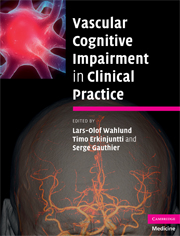Crossref Citations
This Book has been
cited by the following publications. This list is generated based on data provided by Crossref.
2013.
Neuropsychological Neurology.
p.
72.
Zueva, I. V,.
2013.
VASCULAR COGNITIVE IMPAIRMENT: POSSIBLE MECHANISMS OF DEVELOPMENT.
"Arterial’naya Gipertenziya" ("Arterial Hypertension"),
Vol. 19,
Issue. 4,
p.
326.
Đukić, Nenad
Nešković, Mihailo
Ševković, Milorad
and
Radak, Đorđe
2016.
Vascular dementia revised.
Medicinska istrazivanja,
Vol. 50,
Issue. 2,
p.
23.
Lim, Jae-Sung
2017.
Stroke Revisited: Diagnosis and Treatment of Ischemic Stroke.
p.
343.
Wang, Chao
Xu, Jin
Zhao, Songzhen
and
Lou, Wutao
2019.
Identification of Early Vascular Dementia Patients With EEG Signal.
IEEE Access,
Vol. 7,
Issue. ,
p.
68618.
2020.
Language in Dementia.
p.
43.
Cummings, Louise
2020.
Language in Dementia.
Beltrán-Rodríguez, Iria
García-Talavera Casado, Laura
Durán-Borrella, Óscar
González-Feito, Patricia
Sánchez-Serrano, Irene
and
de la Fuente Blanco, Rebeca
2022.
Post-Stroke Rehabilitation.
Meekum, Sutaya
Yuenyongchaiwat, Kornanong
Luangpon, Nongnuch
Keawutan, Piyapa
and
Kooncumchoo, Patcharee
2025.
Enhancing Global Cognition and Executive Functions Through Water-Based Exercise in Mild Cognitive Impairment: A Randomized Controlled Trial.
Life,
Vol. 15,
Issue. 3,
p.
420.



